There are two common pests known for their love of wood (and resulting structural damage): carpenter ants and termites. Although they are commonly confused, they are actually distinct creatures with their own way of doing things.
Let’s explore: Carpenter Ant vs Termite, the key differences.
Comparing a Carpenter Ant and a Termite

| Carpenter ants | Termites | |
|---|---|---|
| Appearance | Black or brown with three distinct segments: head, thorax, and abdomen. | Light tan or cream with two distinct segments (thorax and abdomen appear as a single segment). |
| Nests | Hollowed out wooden structures, piles of sawdust, prefer wet/damp wood. | Pinholes in wood, mud-like tunnels connecting various elements of the nest, |
| Diet | Honeydew, sugars, human food. | Wood |
| Defense mechanisms | Biting mandibles, acidic spray, sticky webbing, exploding bodies. | Small, nearly harmless bite. |
| Colony size | 3,000-100,000 | 60,000-1 million |
The Key Differences between a Carpenter Ant and a Termite
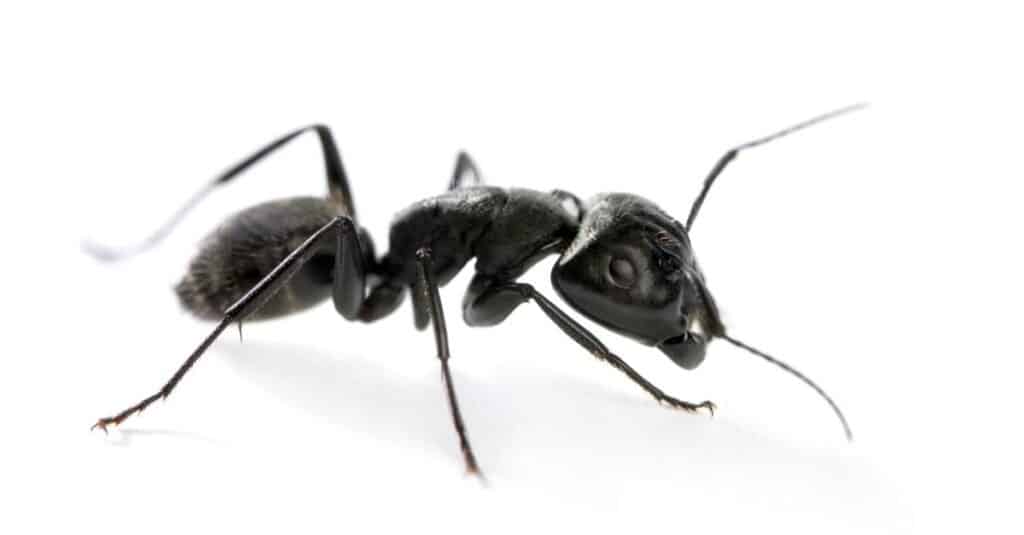
The main differences between carpenter ants and termites are their diet, colony size, and appearance.
©Eric Isselee/Shutterstock.com
The primary differences between carpenters ants and termites are that carpenter ants don’t eat wood, termites have larger colonies, and they both have distinctly different appearances. Carpenter ants and termites are two household pests than can result in a severe structural damage in homes with wood. Although it’s easy to confuse the two, there are some major differences between them.
Ants and termites are both insects, but the two aren’t closely related to one another. In fact, termites have recently been classified as the genetic descendants of cockroaches! There are currently 12,000 known species of ant and over 3,000 species of termite. Together, they are some of the most numerous insects on the planet and can be found in almost every environment across the world.
Let’s take a deeper look at what makes these two insects different.
Carpenter Ant vs Termite: Appearance
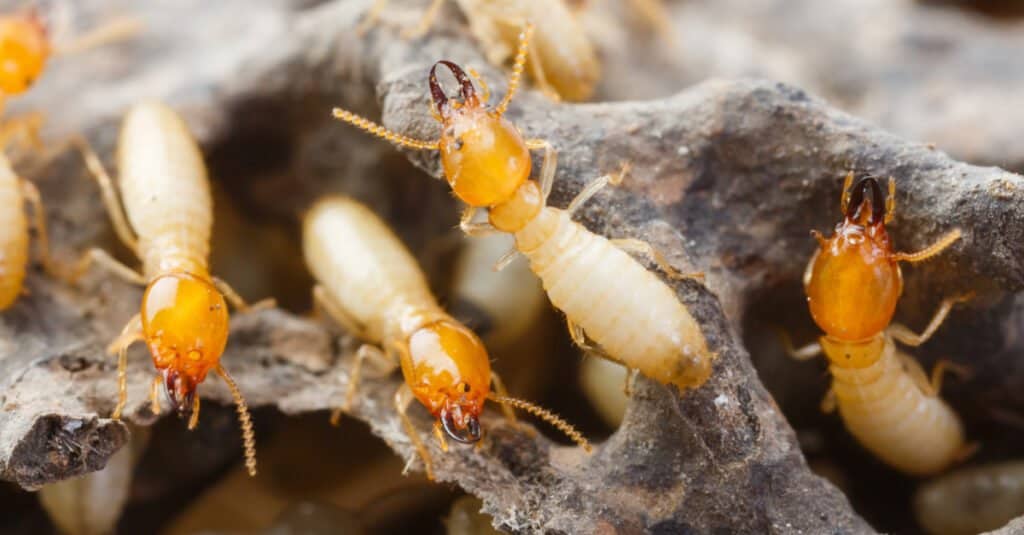
Termites are usually white or cream.
©7th Son Studio/Shutterstock.com
The biggest tell between a carpenter ant and a termite is their appearance. Carpenter ants are brown, reddish, or black. All insects have three distinct body segments; a head, thorax, and abdomen. These three body segments are clearly visible on carpenter ants. Their legs are generally quite long, although the exact appearance of any ant will depend on the exact species. There are over 1,000 individual carpenter ant species, all with their adaptations and appearance.
Termites are also quite variable, although they are quite easy to tell apart from ants. Most termites are white or cream (hence their common name of “white ants”). Many members of their colony have wings, although their wings appear more fragile than most ants with wings will. Like all insects, termites have a head, thorax, and abdomen. What makes termites unique is how their thorax and abdomen seem to appear combined, giving them a two-segmented appearance.
Carpenter Ant vs Termite: Nests
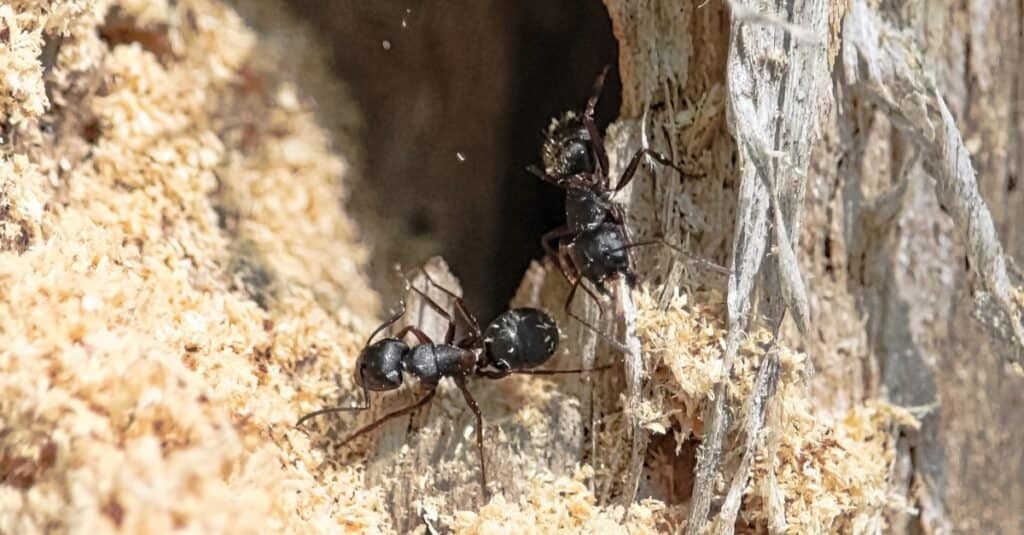
Carpenter ants leave sawdust near the bottom of where they are working.
©Amelia Martin/Shutterstock.com
The nests of carpenter ants and termites are similar, but they have some major differences.
Both carpenter ants and termites are known for building their nests in wood. Carpenter ants have strong mandibles that they use to chew through soft, damp wood. Generally speaking, carpenter ants don’t mess with dry, strong wood. Instead, they build their nests in damaged, damp wood. Often times the wood that carpenter ants use to build their nests was already compromised by water, fungus, or other insects before they ever moved in. Additionally, carpenter ants build slower and differently than termites. As a result, it usually takes longer to notice their presence and any potential structural damage. Carpenter ants leave little piles of sawdust through their process of nest-making and are usually visible near the baseboards.
Termites have large nests that they create by eating and chewing wood. These nests can go through wood extremely fast. You can tell termite nests from the pinholes through the wood (about the size of a mustard seed), as well as the little bits of wood they create when kicking out these holes. Termites also chew wood and mix it with other materials to make tunnels to avoid air while moving around in the nest. These little mud tunnels are usually easy tell for termites.
Carpenter Ant vs Termite: Diet
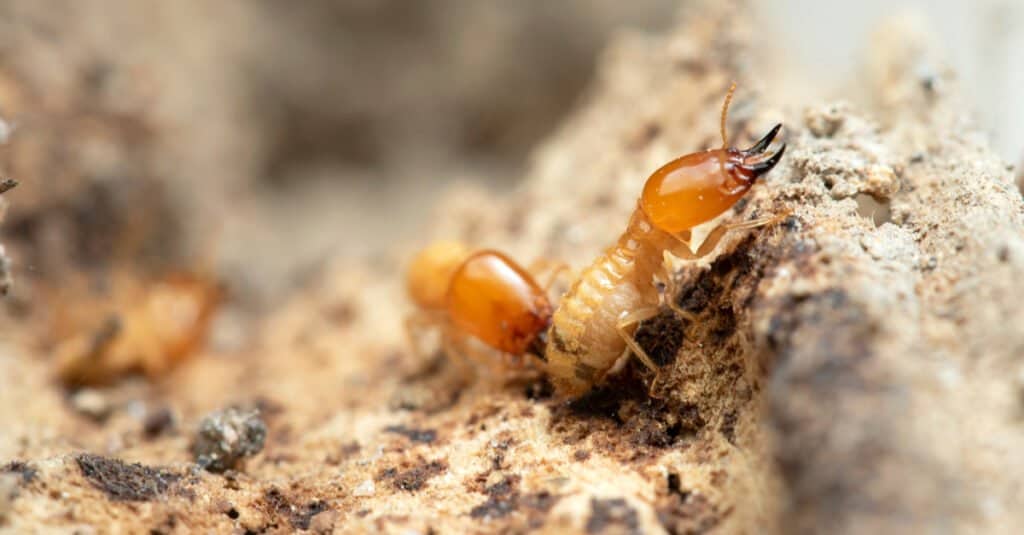
Termites eat wood, Carpenter ants do not.
©bamgraphy/Shutterstock.com
Ants are generally omnivorous, and carpenter ants are no exception. There is a common misconception that carpenter ants eat wood, but that isn’t the case at all. They simply chew wood while making their nests. Carpenter ants get their nutrients from small creatures known as aphids. They essentially farm these creatures, stroking them with their antennae to produce a sugary substance known as honeydew. Aside from honeydew, carpenter ants will eat any sugars substance and any human food left around.
Part of what makes termites more destructive than carpenter ants is their diet of wood. Termites eat the wood they burrow as they have a special gut that can break down cellulose. The gut biome of termites allows them to break down these tough fibers. Incredibly, termites produce 11% of the atmospheric methane present across the earth as they break down cellulose.
Carpenter Ant vs Termite: Defense mechanisms
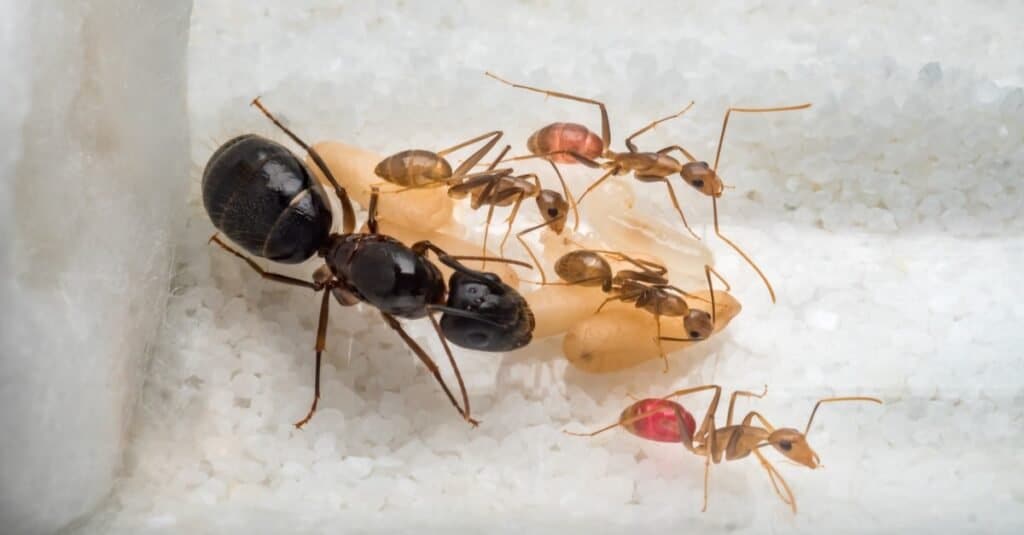
Carpenter ants have stronger bites and can cause their bodies to explode in defense of the colony.
©Poravute Siriphiroon/Shutterstock.com
The defense mechanisms of carpenter ants mostly depend on the species, but many are truly remarkable. There are at least 9 species of Southeast Asian carpenter ants that have the ability to trigger an internal chemical breakdown. After triggering this chemical reaction, the ants literally explode, washing the area around them with a toxic substance. Additionally, some species have sticky glue that can be launched from large, modified mandibles on either side of their body.
Termites are much more defenseless than ant colonies are. Most termites have some form of mandibles, but a bite from a termite usually doesn’t register for an adult human. Still, there are some species in the tropics that have similar capabilities to some ants. One group of termites has soldiers that can spray liquid through a horn on the front of their heads. Another group of termites is known to commit suicide, much like carpenter ants, by rupturing their own bodies.
Carpenter Ant vs Termite: Colony size
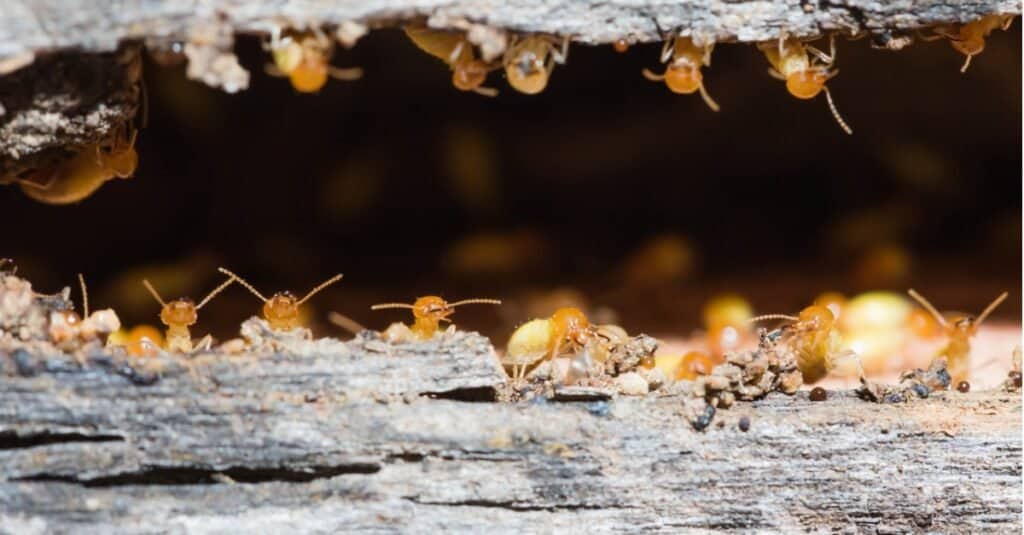
Termites can have colonies in excess of 1 million individuals.
©iStock.com/chyball
Between the two, termites have much larger colonies. A carpenter ant colony can be split into two categories: satellites or main colonies. Satellite colonies are sent out to find new places to live and expand the web of ants. Mature satellite colonies usually have a max of 10,000 individuals, while full colonies can have as many as 100,000.
Termites have some of the largest colonies of any insect in the world. Although it depends on the species, termites can have colonies of up to 1 million insects in a single location.
The photo featured at the top of this post is © PK289/Shutterstock.com
Thank you for reading! Have some feedback for us? Contact the AZ Animals editorial team.






